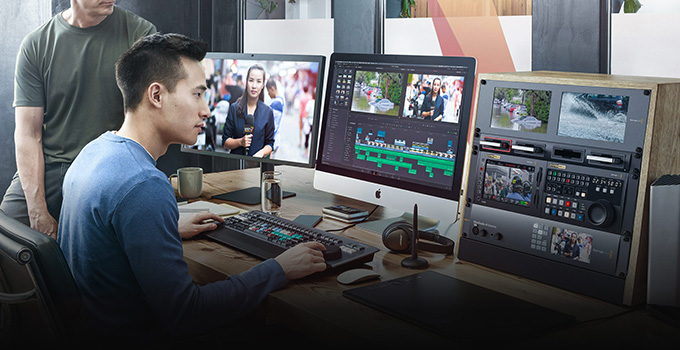A lot of color grading work in DaVinci Resolve is going to be somewhat creative. But, before you can properly apply those fun LUTs or create a brand-new look you will want to make sure your baseline is properly set up.
Part of that is going to be nailing the white balance. If your core colors are off the rest of the chain isn’t going to give you the results you want.
Make sure you are nailing white balance with minimal effort by following this quick tutorial put together by Donovan Anderson. It’ll work with footage that looks quite off when you examine it.
If you are working with compressed footage, even ProRes, you’ll want to make sure that your white balance is good at the point of capture. Only raw footage will give you the flexibility to make aggressive white balance changes without losing image quality.
Fortunately, if you have 10-bit footage with a decent bit rate there are ways to correct it in post. That is what Donovan is showing here.
The example he has is from a wedding where the venue had some overhead lights on as well as windows open. When the day started there was a lot more light shining through, and so Donovan set his white balance for this scenario.
Unfortunately, a short winter day and clouds made it so that the overhead lights took over long before the shoot ended. As you can see the white balance didn’t quite work out and the footage looks very yellow and warm.
Being a corrective action this should be applied early in your nodes, before your creative looks. In your first node, you’ll want to head down to the primary wheels’ area and find the temperature slider.
Make an adjustment here to get it roughly where you think the footage should be. You’ll probably see a major improvement just with that change.
Where he still sees an issue is in the white dress. Since temperature adjustments are global it doesn’t always work out for certain subject matter, and white is a difficult thing to get right with a simple adjustment.

Image Credit: Blackmagic Design
He makes a serial node to address the white dress. In this node he uses the color picker in the qualifiers to select the brightest part of the dress. This should select the white area. To check on this you should turn on split screen view and set it to highlighted modes.
This will show a better view of the mask you are creating. You’ll have to adjust the range of the qualifier to make sure you are getting as much of the dress and other white areas selected at once. You want to stop when you are pulling in areas you don’t want to include. Using softness controls will help smooth out the selection.
With the white areas selected now all you need to do is go find the saturation adjustment. Decrease it and you’ll see that any shifts or tones just fade away. A creative option would be adjusting the luminance to make it pop a bit.
One more corrector node is added. This is the red/orange fix. He makes use of the relatively new Color Warper tool. He wants to make changes to the skin tones and similar areas as they seem to pick up a green cast.
He takes the line on the edge of the green and orange tones and shifts it ever so slightly towards the orange/red. This immediately cleans things up and gives it a more natural and warmer tone.
Now you should be looking at a well-corrected image that is ready for your full color grading technique.
This is a bit more involved that the most basic white balance corrections, but I think the results turned out a lot better than just sliding the temperature in one direction. What did you think of this method?
[source: Donovan Anderson]
Disclaimer: As an Amazon Associate partner and participant in B&H and Adorama Affiliate programmes, we earn a small comission from each purchase made through the affiliate links listed above at no additional cost to you.




